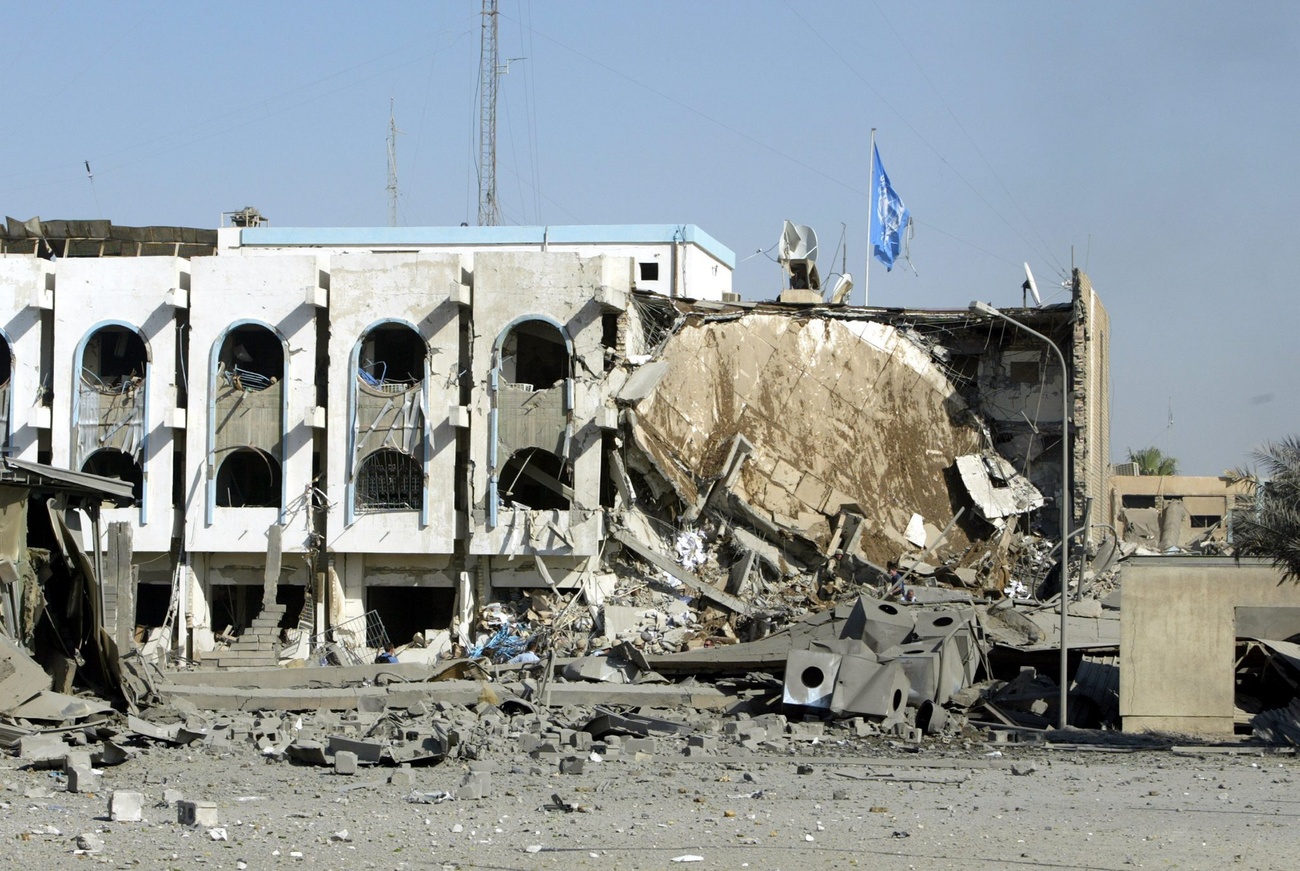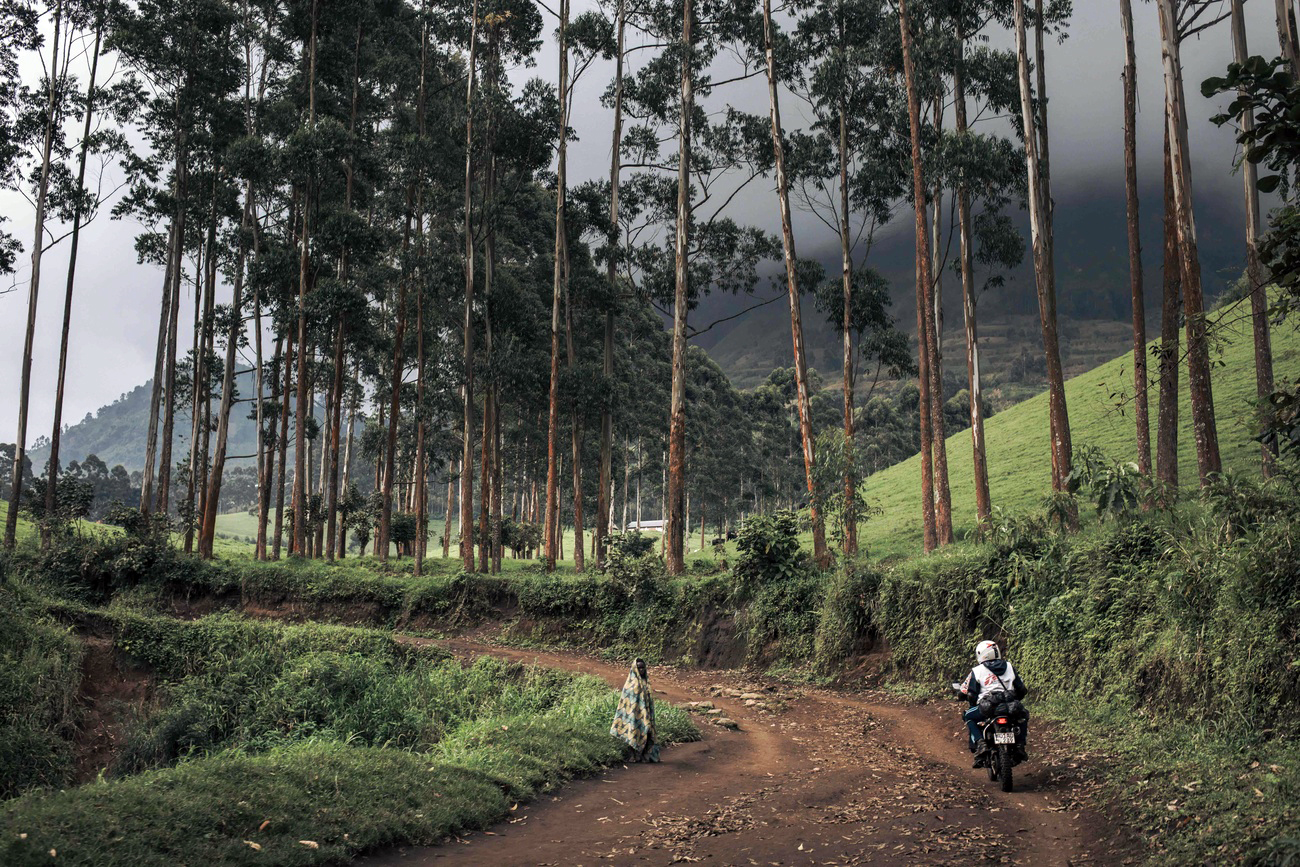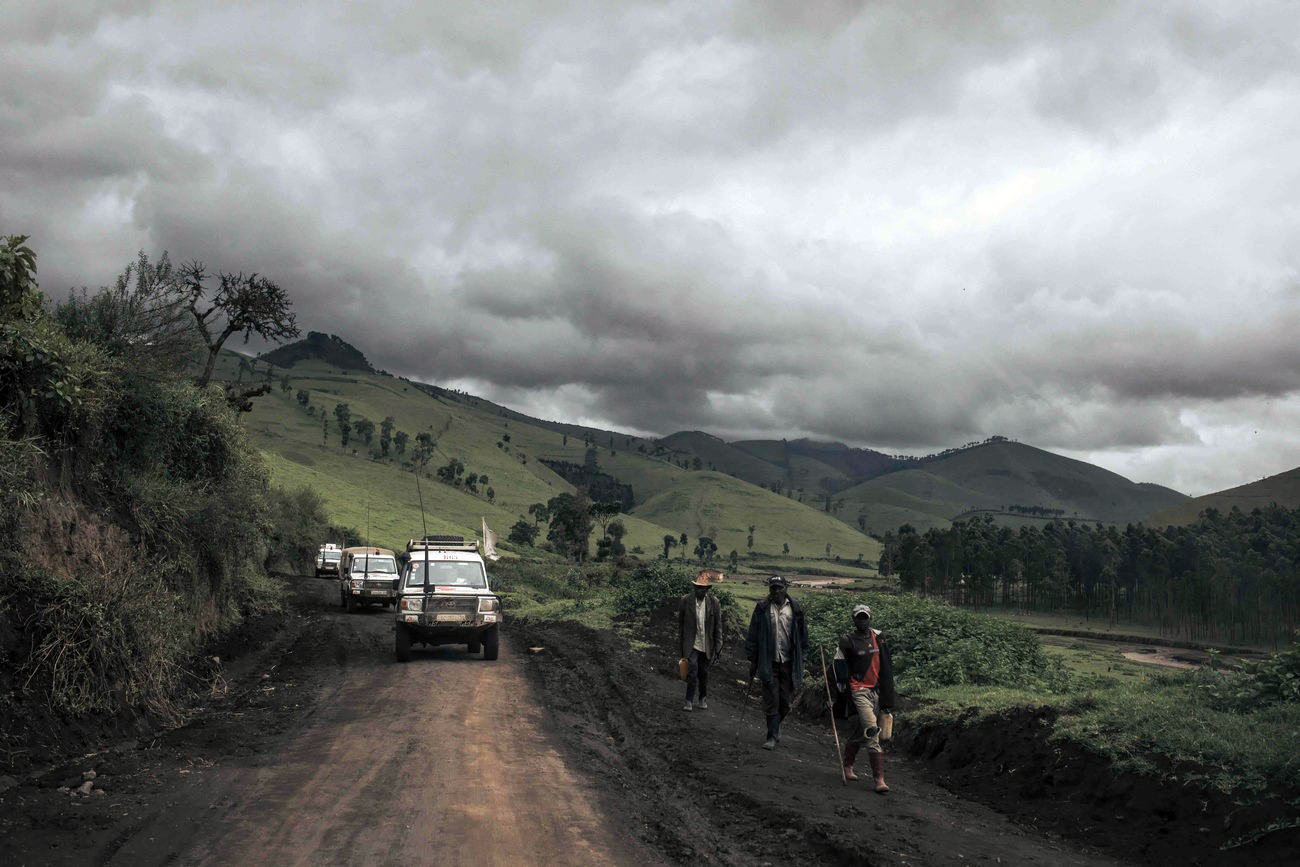
Baghdad UN bombing: 20 years on, aid workers face even more dangers

Twenty years since a deadly truck bomb exploded outside the offices of a United Nations mission in Baghdad, aid workers have lost a sense of security. The threats they face have grown in number and scope.
Like other Iraqis hired locally by the United Nations in the early 2000s, Mujahed Mohammed Hasan had been full of optimism and hope for a better future for his country. Iraq’s dictator, Saddam Hussein, had recently been deposed after an invasion by US and allied forces, and the UN Assistance Mission for Iraq (UNAMI) was established to support development and political reconciliation, and to coordinate humanitarian assistance.
“It was the happiest time of my life,” Hasan told SWI swissinfo.ch. “I was very passionate about humanitarian causes. It inspired me to join the UN, which has a global reach and the ability to make a positive impact on the lives of countless individuals. [However] we had a false sense of security, with armoured vehicles surrounding the corners of the building.”
When a massive truck bomb exploded on August 19, 2003 outside UNAMI’s offices, it turned Hasan’s life upside down. It also signalled to aid groups that it was time to reassess the security of their workers.
Hasan worked in the UN mission’s IT department and had just completed his workday. He had made plans to join colleagues for a round or two of table tennis. “I was just sitting at my desk replying to emails and suddenly everything changed. The place was filled with smoke and chaos, and glass was flying everywhere. I was really trying to process if it was real or just a dream,” he said. With just a wall separating him from the blast, he hadn’t heard the explosion as he was in the middle of its sonic vacuum.
The blast killed 22 people and left over 100 injured, including Hasan, who was hit in the head. He said it took 10 years for him to recover from the severe injuries he sustained. Since settling in the US in 2014, he has returned to humanitarian relief assistance. He now runs a non-profit, Jannah, helping Iraqis displaced by sectarian violence.
“The violence that we experienced that day left a lasting impact on the UN as a whole, and on me and my perception of the dangers faced by humanitarian workers in conflict zones,” he said.
Aid groups in catch-up mode
For humanitarians, the security environment in which they now operate has deteriorated over the past two decades. “The contrast couldn’t be starker,” said Sofia Sprechmann, the secretary general of Geneva-based CARE International, whose Iraq director, Margaret Hassan, was killed in a videotaped execution by Sunni insurgents, a year after the Baghdad bombing. The body was never found.
Speaking by phone from Quito, the capital of Ecuador, Sprechmann told SWI swissinfo.ch that when she first started as an aid worker 29 years ago in Cambodia, the Khmer Rouge was still active. She later worked in Sri Lanka in areas where the armed group Tamil Tigers operated. “All of that time, wearing a vest with an NGO logo was our best protection,” she said.

In the intervening years, deliberate targeting of aid workers has become increasingly common, by various actors, and logos are now avoided in certain places, for the safety of aid staff.
In Latin America and the Caribbean, the rise of organised crime groups has complicated the work of humanitarians. “Gangs take over when states are absent,” Sprechmann said. In Haiti, the UN estimates gangs control roughly 80% of the country’s capitaExternal linkl, including aid delivery routes from the port and access to entire neighbourhoods. Aid workers are potential kidnapping targets as they are perceived as having regular income.
In the Central African Republic (CAR) – where last year 2.2 million people were in need of aid – attacks on humanitarians by bandits and armed groups have turned the country into one of the most dangerous humanitarian assignments.
“For aid workers, we are always expected to be there, even if no one else is there,” said Denise Brown, the UN’s former humanitarian operations chief in CAR, and now in charge of the organisation’s humanitarian operations in Ukraine. “That means that we take huge risks.”
In late July, a convoy of medics working for Médecins Sans Frontières was beaten and whipped in the capital of Sudan, where 24.7 million people are in need of aid since a power struggle between the army and paramilitary forces erupted in April.
Tools at hand
For the International Committee of the Red Cross (ICRC), whose own headquarters in Baghdad were bombed in October 2003, creating trust through communication with local actors is key to ensuring staff security.
“One way the ICRC seeks to reduce the dangers of operating in [conflict zones] is constant, open communication with government forces and armed groups,” Ewan Watson, a spokesperson for the organisation, wrote in an email statement to SWI swissinfo.ch. “However, the ICRC has seen a fracturing and proliferation of armed groups in recent years, a fact that makes it more challenging to establish security guarantees for our work.”
Sprechmann explained that in some places, a deterioration of trust in NGOs – historically established during colonial contexts – may have contributed to fuelling more recent attacks. CARE and other international aid groups have been working together on decolonising the sector and creating more diverse and representative workforces.

As in other major organisations, CARE workers participate regularly in hostile environment awareness training (HEAT). This prepares them for potential kidnapping attempts or attacks. They are also offered psychosocial support following traumatic experiences.
But amid a 30% rise since early 2022 in the number of people in need of humanitarian aid globally – an estimated 360 million people now need help – and with the costs of delivering aid rising due to the war in Ukraine, security costs are also up. “With the same amount of dollars you can reach fewer people, and that of course creates a perfect storm,” Sprechmann said.
Weaponising misinfomation
Meanwhile, Christina Wille, director of Insecurity Insight, which provides security advice to aid agencies, warns that misinformation on social media platforms can create a (sometimes wilful) misunderstanding of the humanitarian principles by which aid groups operate, undermining their ability to provide impartial assistance to all those in need.
“What they are doing is so often misrepresented as being partisan in some form. That leads to a very serious shrinking of the humanitarian space,” Wille explained.
Earlier this year, the ICRC had to issue a statementExternal link after false rumours began to circulate about its mission in Ukraine, including that it was participating in the forcible transferExternal link of Ukrainian civilians to Russia.
Hasan, who continues to consult a therapist to help overcome his anxieties, was reflective when asked whether a return to security for humanitarians was possible.
“Those dark forces will always hide and resurface as soon as we have vulnerability,” he said. “All we need to do is prepare and be ready, because together we can exemplify the power of united efforts to address crises and support those affected by tragedies.”

In compliance with the JTI standards
More: SWI swissinfo.ch certified by the Journalism Trust Initiative






























You can find an overview of ongoing debates with our journalists here . Please join us!
If you want to start a conversation about a topic raised in this article or want to report factual errors, email us at english@swissinfo.ch.